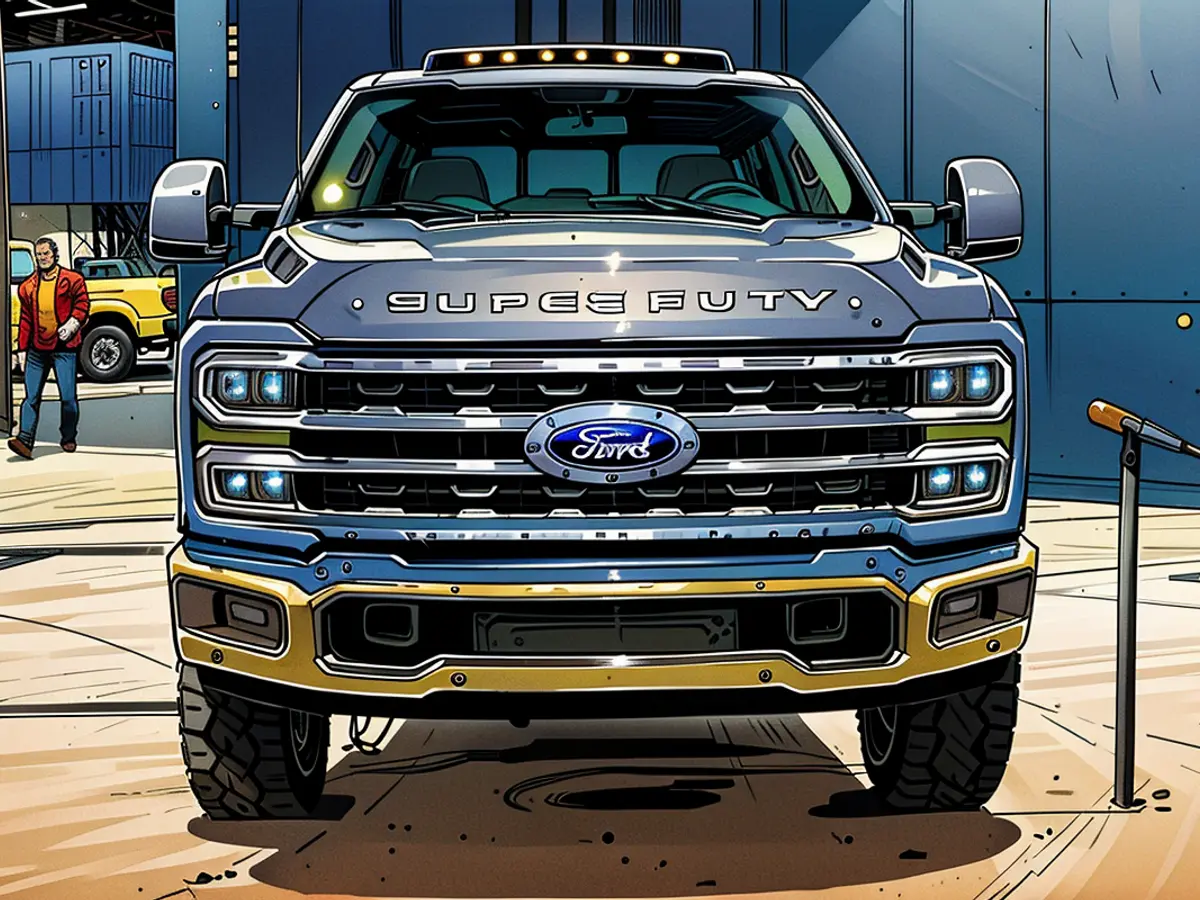Americans just can’t quit their giant, gas-burning trucks
Although traditional automakers have pledged to invest tens of billions of dollars to transition to EVs in the coming decade, they’re making a renewed bet on those large gasoline-powered vehicles that they expected to move away from. The surprising change is in part because consumer demand for EVs has not lived up to expectations, and it is partly because the demand for large gasoline powered trucks and SUVs is keeping prices, and profits, in that part of the market very strong.
A prime example of traditional automakers’ changing views of electric vehicles can be found in the Ford assembly plant in Oakville, Ontario, just outside of Toronto.
Last year, when Ford was negotiating with the Unifor, the union that represents Canadian auto workers, the company promised it would build a new three-row EV at its plant in Oakville, Ontario, starting as soon as 2025. But in April, it hit the brakes on those plans and put the roll-out of the EV model on hold until at least 2027.
“The additional time will allow for the consumer market for three-row EVs to further develop and enable Ford to take advantage of emerging battery technology,” Ford said in a statement at that time. When – and if – it does move ahead with the new three-row EV, it might look to build it at a US or Canadian plant, or it might look to a lower cost factoryin Mexico.
Last month, Ford announced plans for a different vehicle to be built at the Oakville plant in its place: Super Duty trucks, a larger version of Ford’s F-series trucks that remain Ford’s best selling vehicles. Ford said it will build 100,000 of the Super Duty trucks a year in Oakville starting in 2026, even while maintaining production of the trucks at its plants in Kentucky and Ohio.
“Even with our Kentucky Truck plant and Ohio Assembly Plant running flat out, we can’t meet the demand” for the Super Duty, CEO Jim Farley said in announcing the move.
While Ford says it has plans for an “electrified” version of the Super Duty, it has yet to give a date for that offering. Ford also hasn’t said if it will be a pure electric like the F-150 Lightning, or a hybrid model that still has an internal combustion engine (ICE).
A ‘harsh reality’ for EVs
Ford likes to brag about its growing EV sales, but its profit is still primarily coming from the sales of gasoline powered trucks and SUVs. Those gas-burning behemoths produce the billions of dollars in earnings that make up for Ford’s $1 billion of losses each quarter on EVs.
The Ford F-150 Lightning, the electric version of its best-selling pickup, has generated more attention and marketing muscle than actual sales. US sales came to 7,900 Lightnings in the second quarter, or less than 4% of F-Series sales overall, and just over a third of sales of the Ford Expedition, its largest SUV.
“The reality has settled in on the electrification of the United States. And it’s a harsh reality,” said Ivan Drury, director of insights for car selling site Edmunds.
Ford isn’t the only automaker pulling back on its EV plans and making new investment in ICE vehicles. GM says it no longer is committed to building 1 million EVs in North America by next year, a goal it originally set in 2022.
“As excited as we are about our EVs and our early success, we are committed to disciplined volume growth,” GM CEO Mary Barra saidin a statement to shareholders and employees last month when announcing strong profits from its traditional ICE vehicles. GM is in the process of launching eight all-new or redesigned gasoline-powered SUV models in its home market.
This is not to say that the traditional automakers are dropping their EV plans altogether or that EV sales are falling. US sales of EVs grew nearly 5% in the second quarter compared to a year earlier, compared to a 0.6% drop in US sales of ICE vehicles. But most of that drop came from the sedan segment of the market that GM, Ford and Stellantis abandoned years ago.
But EV sales, which initially grew at a double-digit pace, haven’t shot up exponentially as automakers hoped or expected.
EV profitability hit by lower prices
Part of the reason for the shift in investment is that traditional automakers’ EV profitability has proven to be far more elusive than the companies had hoped – especially in the face of a price war for EVs, started by Tesla to support its sales in the face of growing competition in the EV market.
Ford, the only automaker to break out financial results for its EV segment, reports that it lost $1.1 billion before interest and taxes from the unit in the second quarter, on sales of 26,000 EVs. That works out to a loss of $44,000 per vehicle, although Ford objects to that calculation, pointing out the losses include longer term research and development costs and not just the cost of producing each EV.
Meanwhile profits on ICE vehicles remains strong.
GM just raised its profit targets for the year and is poised to report record profits, even with a labor deal reached with the United Auto Workers union last year that gave workers immediate pay raises of at least 11%.
Tesla once made more profit than any traditional US automaker, despite selling a fraction of the number of cars of those ICE-dependent rivals. That promise of greater profit margins and soaring stock price is one of the reasons traditional automakers announced their big bets on an EV future.
But those dynamics have shifted. In the second-quarter, GM profits were double Tesla’s.
Uncertainty due to election
Another part of what drove the legacy automakers’ plans for an EV future: the promise of much tougher emission rules in both Europe and the United States, and tax credits and other incentives for those who buy EVs. But former President Donald Trump has bashed those incentives and argued that EVs are bad for the US economy – even though Tesla CEO Elon Musk as become a major supporter of Trump’s candidacy to return to the White House.
That uncertainty about the future of US EV incentives prompted automakers to reconsider their earlier EV plans.
“In the Western world, the political mandates are around four to five years,” Stellantis CEO Carlos Tavares said in a recent media roundtable. “And the transformation in which we are engaged has a lead time of 10 to 20 years. We need stability on the regulations. We need stability on the subsidies, we need stability on the overall market environment so that we can work hard, deep and in a persistent manner to serve the societies and the communities in which we operate.”
“The only things we can read today are the statements made by the different contenders of the election, trying to guess what they intend to do,” he added.
In light of the slower pace of EV sales and the ongoing profitability issues in the electric vehicle segment, Ford decided to postpone the launch of its three-row EV model until at least 2027, focusing instead on its profitable business in gasoline-powered trucks and SUVs. The price war for EVs, initiated by Tesla, has made traditional automakers' quest for EV profitability more challenging.
Despite the growth in US EV sales, they have not reached the exponential increase that automakers had hoped for. The uncertainty regarding future US EV incentives and the promotion of gasoline-powered vehicles by former President Donald Trump have also influenced traditional automakers' strategies, pushing them to reconsider their initial EV plans.








